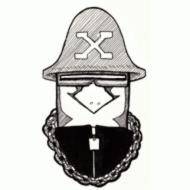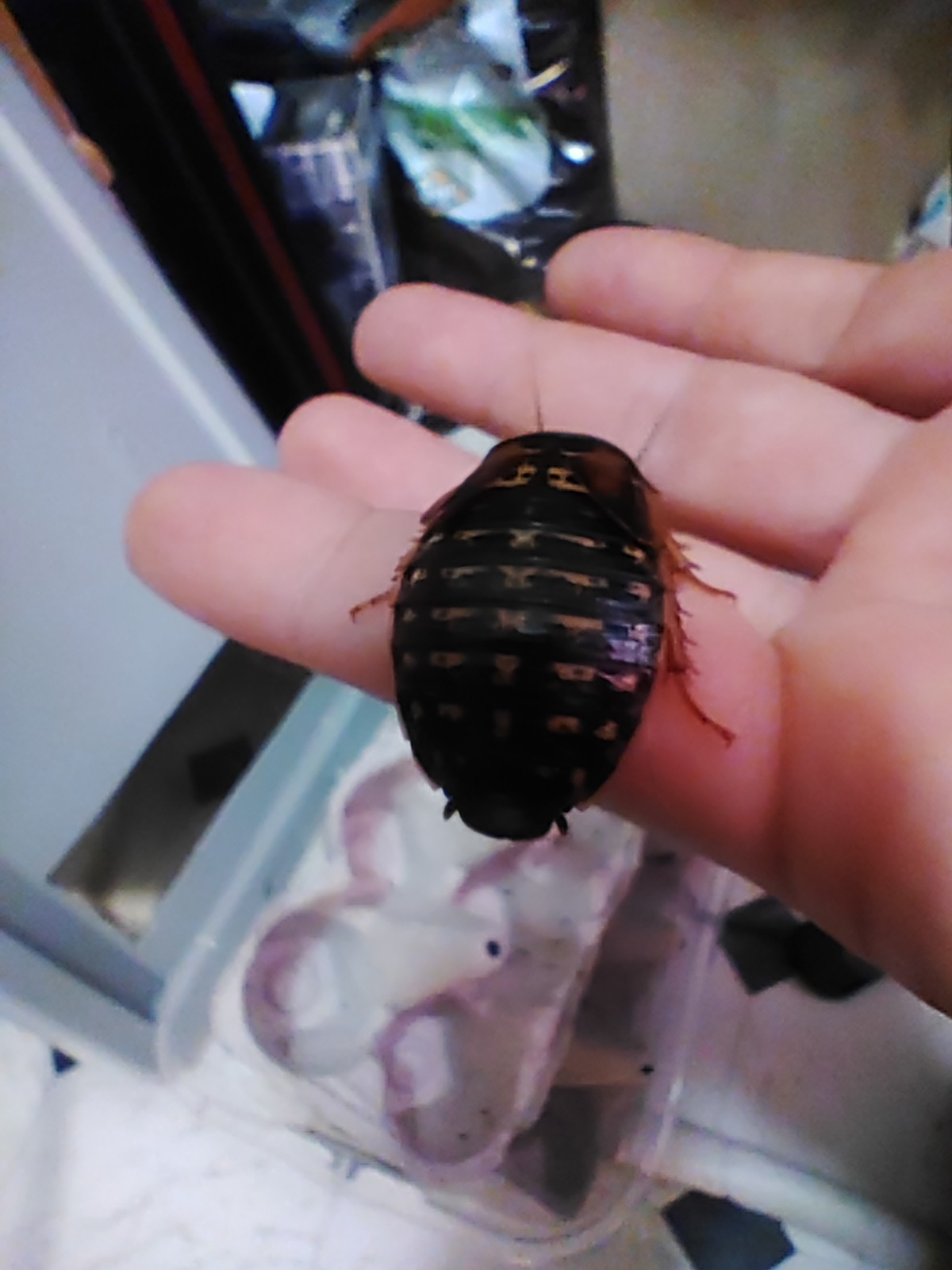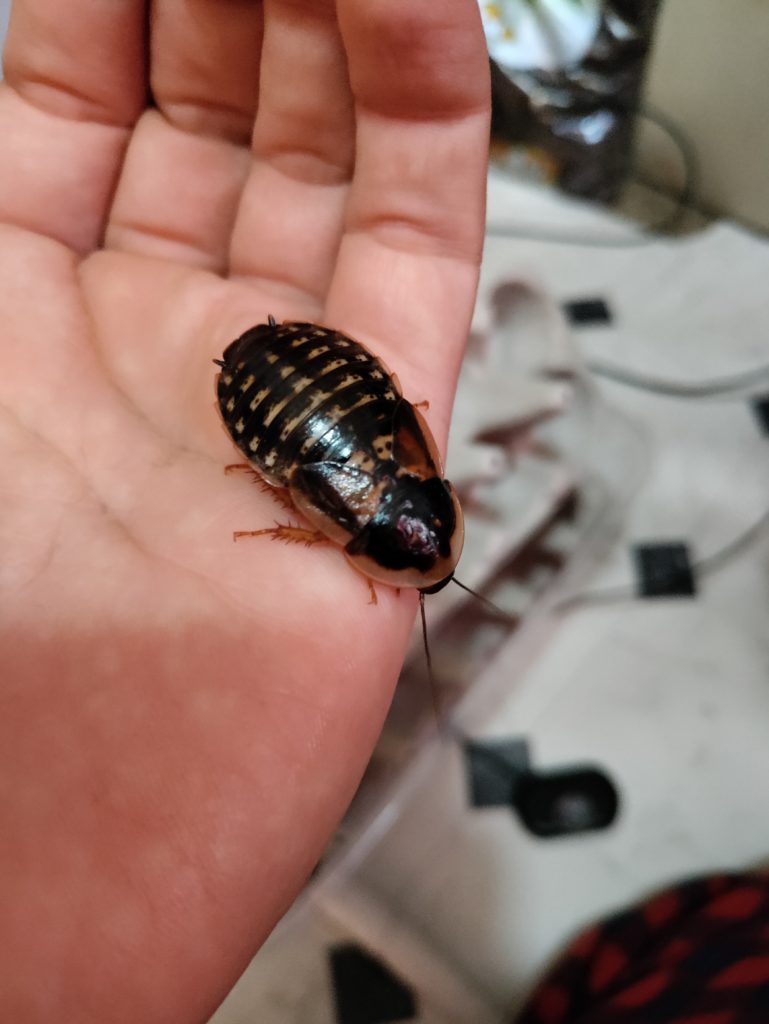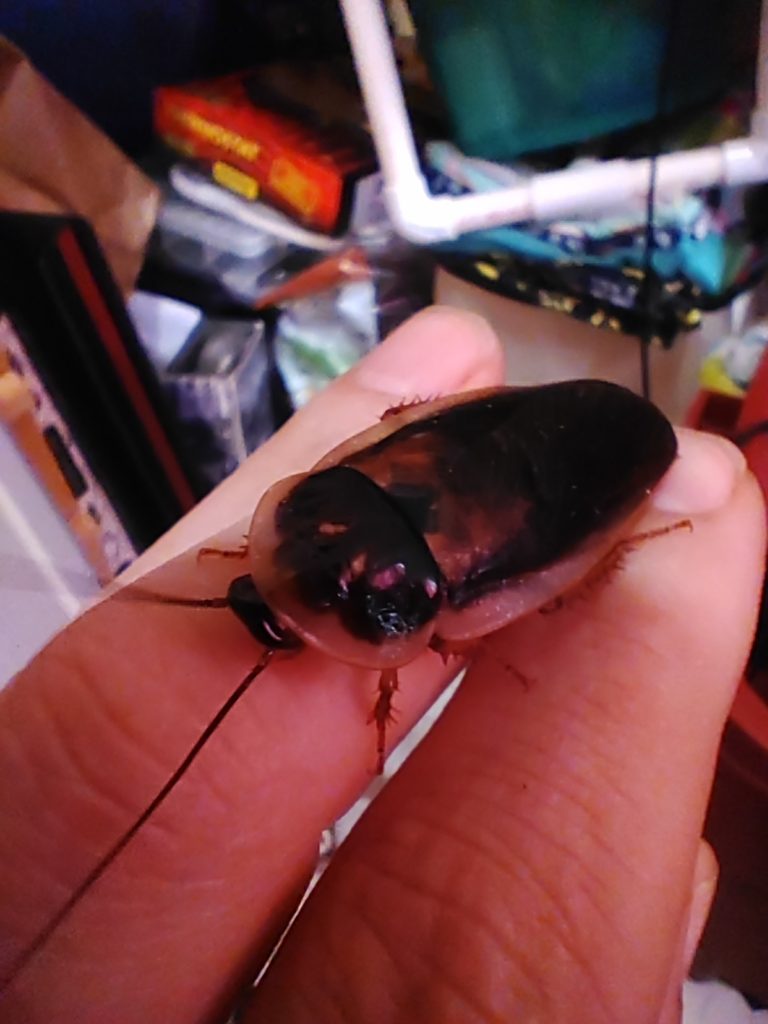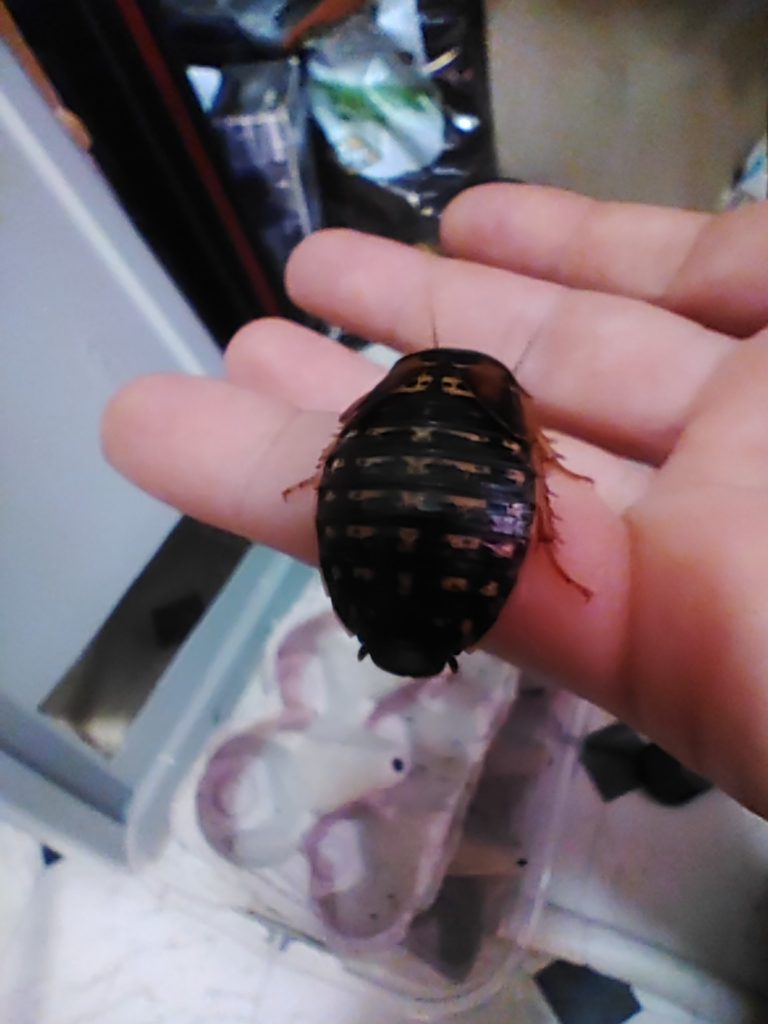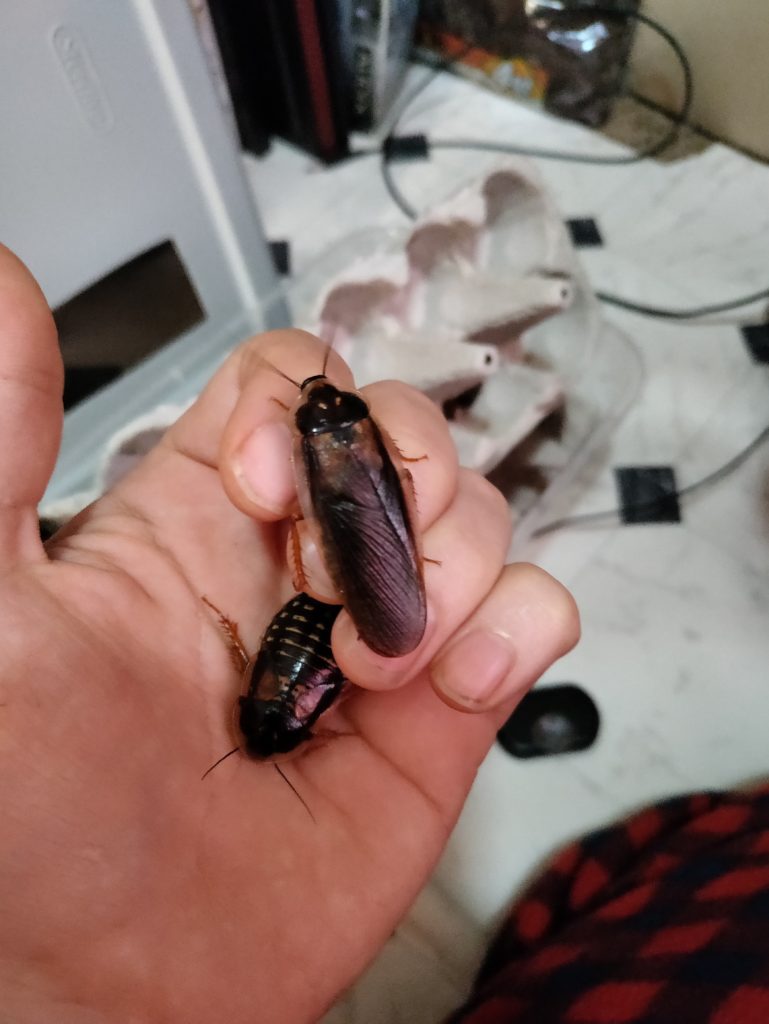It has finally happened! After weening myself off of compulsively peering in on all my various CUC’s and establishing a care routine where I only have to interact with their enclosures every other day for all beasts except for the roaches (who still get daily water changes), I have settled for a thorough investigation of the Dubias maybe twice a week, at which point I gently pull out the egg cartons and visually inspect the insects, looking for any evidence of dead, injured, or sick insects as well as hoping to glimpse wings– clear evidence of an adult male, amongst the scuttling bodies. I literally dreamed I had found an adult male late last week. My premonition was off by about 5 days, it seems, as this morning I made the feeding and inspection rounds to find 3 separate adult males in the enclosure! There are also several extremely glossy-looking large females, which I assume are also adults, so I’m hoping to see some Dubia nymphs scurrying about the enclosure in 4-6 weeks from now– maybe I’ll have nymphs at the same time I get my new hedgehog!
In other news, I’ve re-arranged my office to clear a shelf in one of my book cases to conveniently house the isopod enclosures, and I’ve moved all the isopods to the same size container and consolidated the two types of “wild” isopods that folks online identified as likely to be two different color morphs of the common Armadillidium vulgare, which allowed them all to fit together on my shelf. Now maintenance involves taking these containers down 3 at a time, cleaning out old food, replacing with fresh food, quickly admiring any easily viewable isopods or swarms of springtails, spraying a little water into the “wet side” of the enclosure, and moving on to the next. Maintenance takes about 15 minutes if I don’t stop to watch things for too long.
This leaves just the Morio beetles and the mealworms in their own enclosures that don’t match the form factor of the isopods, which seems to work well as they don’t need much beyond floorspace and enough headroom to put some egg carto pieces into the enclosure with them, which keeps them happy. I’ve been monitoring the substrate of the Morio beetle enclosure for any evidence of young larva, as my intention is to move the Morio Beetles to a new enclosure once the current one has been filled with eggs, as the beetles will eat the young, and should be moved every 2 weeks once things get rolling. It has been about 5 weeks since the first Morio beetles were added to their current enclosure, and I’ve been told that this process takes 4-6 weeks to get going as the first beetles mature and begin to breed, so I expect to start seeing evidence of this here in another couple of weeks at the latest.
Numerous young isopods are now visible in several of the enclosures, which is evidence of successful growth of these colonies, and several containers are teaming with springtails now as well. Today’s feeding mystery was finding the Dwarf Purple isopods enclosure completely devoid of food, leaving me wondering if I forgot to feed them in my last round, or whether there are really a hoard of these tiny and secretive isopods that were able to actually devour all the food I had made available.
The coroplast ‘collar’ for the hedgehog enclosure has been designed and a test version has been built from foamboard to test things out. The only complication is that one wall is 5/8″ lower than the other to allow for the screen top to be slid into place, which I don’t plan to make any use of. This lowered side makes for some somewhat complicated connections, but I think I have a solution sorted that handles most of this after some fairly intensive papercrafting. I’ll need to buy some coroplast to make the final version, but I have templates ready to cut and fold when I do. This collar will increase the side walls of the enclosure by about 5″, which should be more than enough to prevent hedgehog escapes.
